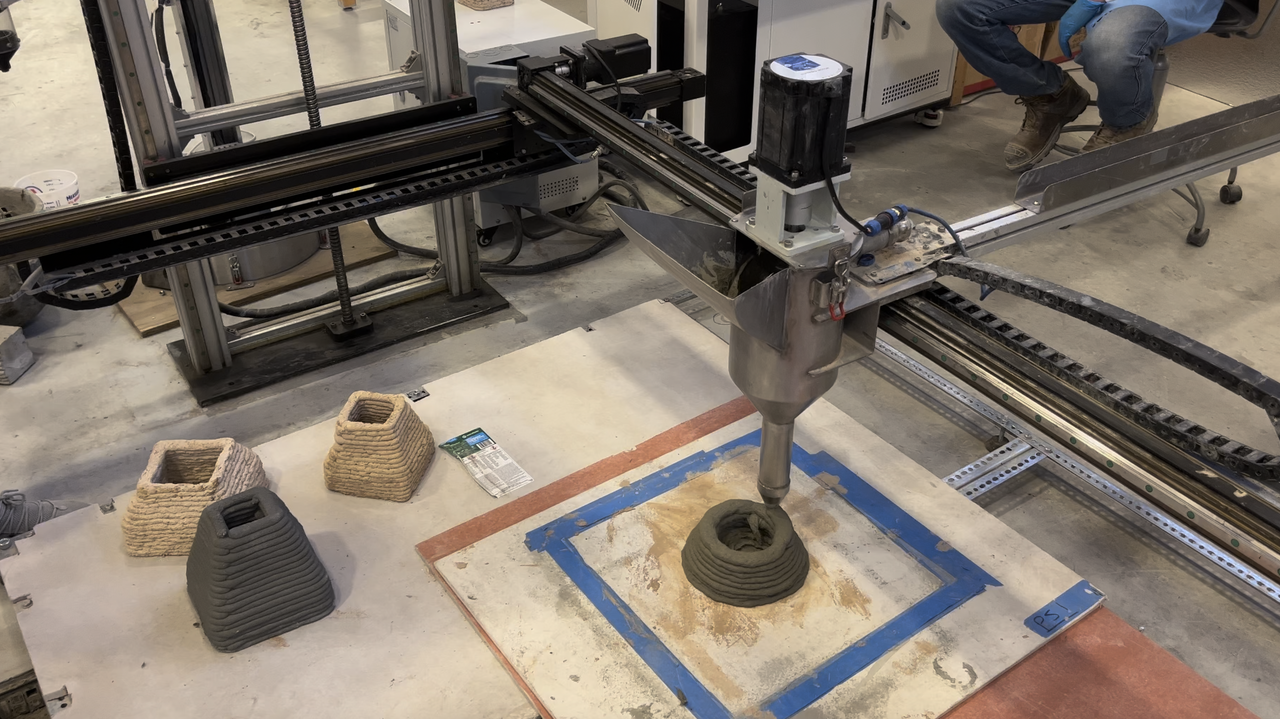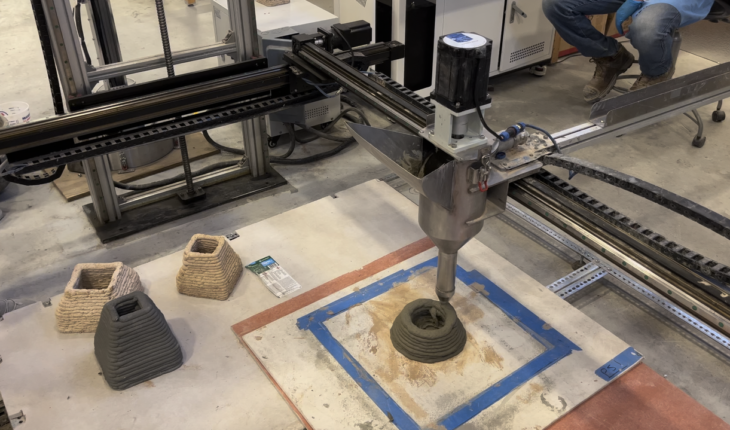
University of New Mexico civil engineers patent ultra-ductile cementitious material.
The idea of 3D printing with concrete has been around for a lot longer than you might expect.
In fact, the founder of Urschel Laboratories, William Urschel, developed a portable cement-laying machine in the 1940s that looks a lot like a concrete 3D printer. You may have seen this video of it in action, though the timing of the invention has been misattributed to the previous decade:
There are plenty of reasons the 3D printed concrete industry didn’t take off with Urschel’s invention, not the least of which is the need for reinforcement in concrete structures. Traditionally, building with concrete requires the inclusion of beams or rebar to provide tensile strength, and this limits the extent to which concrete 3D printing can operate autonomously.
That’s why civil engineering researchers at the University of New Mexico (UNM) have been developing a self-reinforced, ultra-ductile cementitious material that combines tensile strength with the necessary viscosity to be extruded by a concrete 3D printer without clogging the nozzle.
“If we talk about 3D printing or additive manufacturing in the field of metals and plastics, it’s at a very advanced stage, but concrete printing is still developing,” said Muhammad Saeed Zafar in an interview at UNM. “If we can successfully design ultrahigh ductile material without using conventional steel bars, which will solve the problem of the incompatibility of reinforcement with the 3D printing process.”
Zafar received his PhD last year and has been working with assistant professor Marham Hojati on the new concrete formulation. “The material should hold and resist both tension and compression,” Hojati explained in the same interview. “Concrete is a great material for compression, but when it comes to tension, it’s a weak material.”
The concrete Zafar and Hojati developed is patented under four different mixes that include various proportions of polyvinyl alcohol, fly ash, silica fume and ultra-high molecular weight polyethylene fibers. According to the researchers, these mixes exhibit up to 11.9% higher strain capacity compared to traditional concrete formulations.
“Because of the incorporation of large quantities of short polymeric fibers in this material, it could hold all of the concrete together when subjected to any bending or tension load,” Hojati said. “If we use this material at a larger scale, we can minimize the requirement of external reinforcement to the printed concrete structure.”





